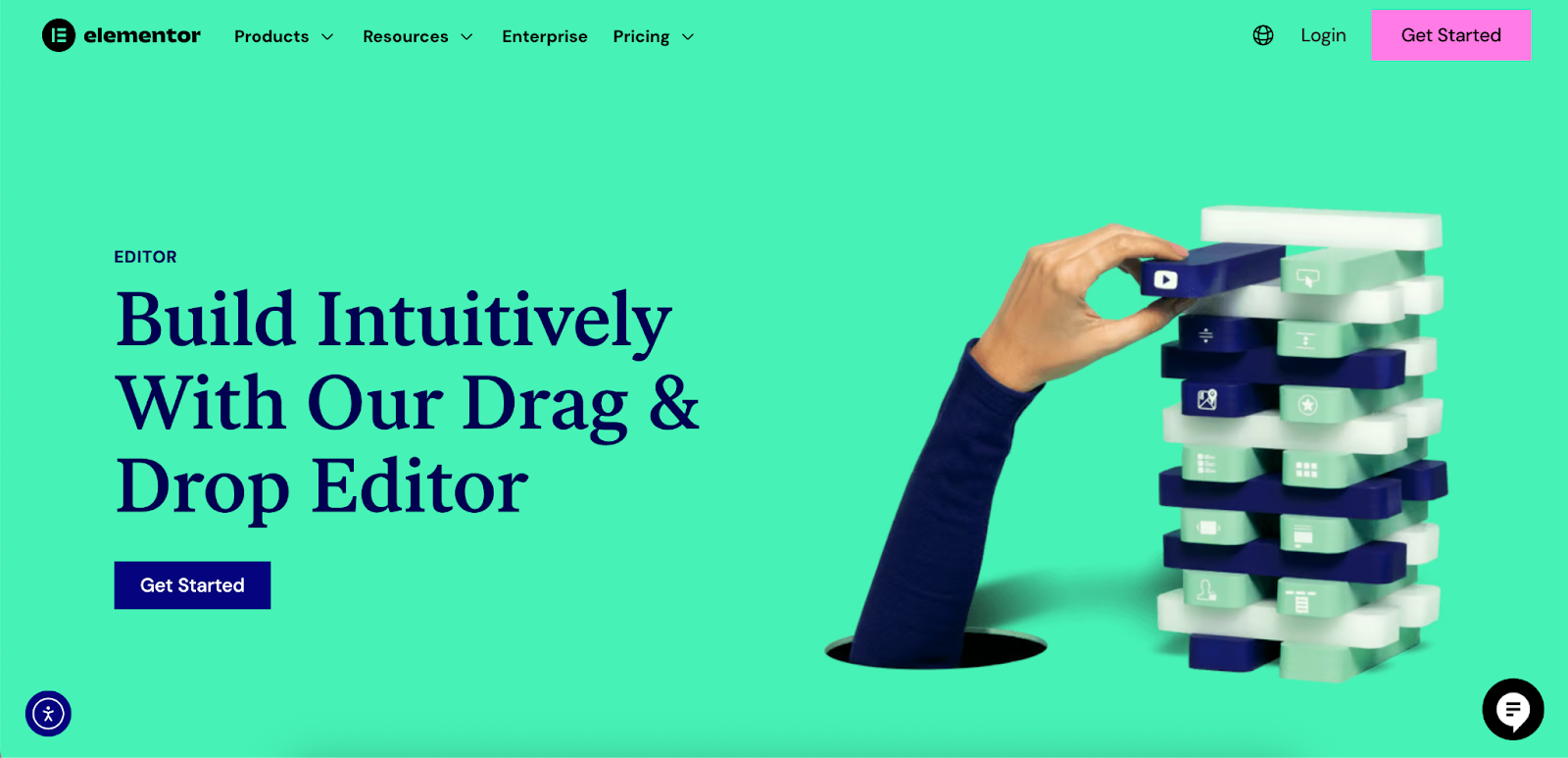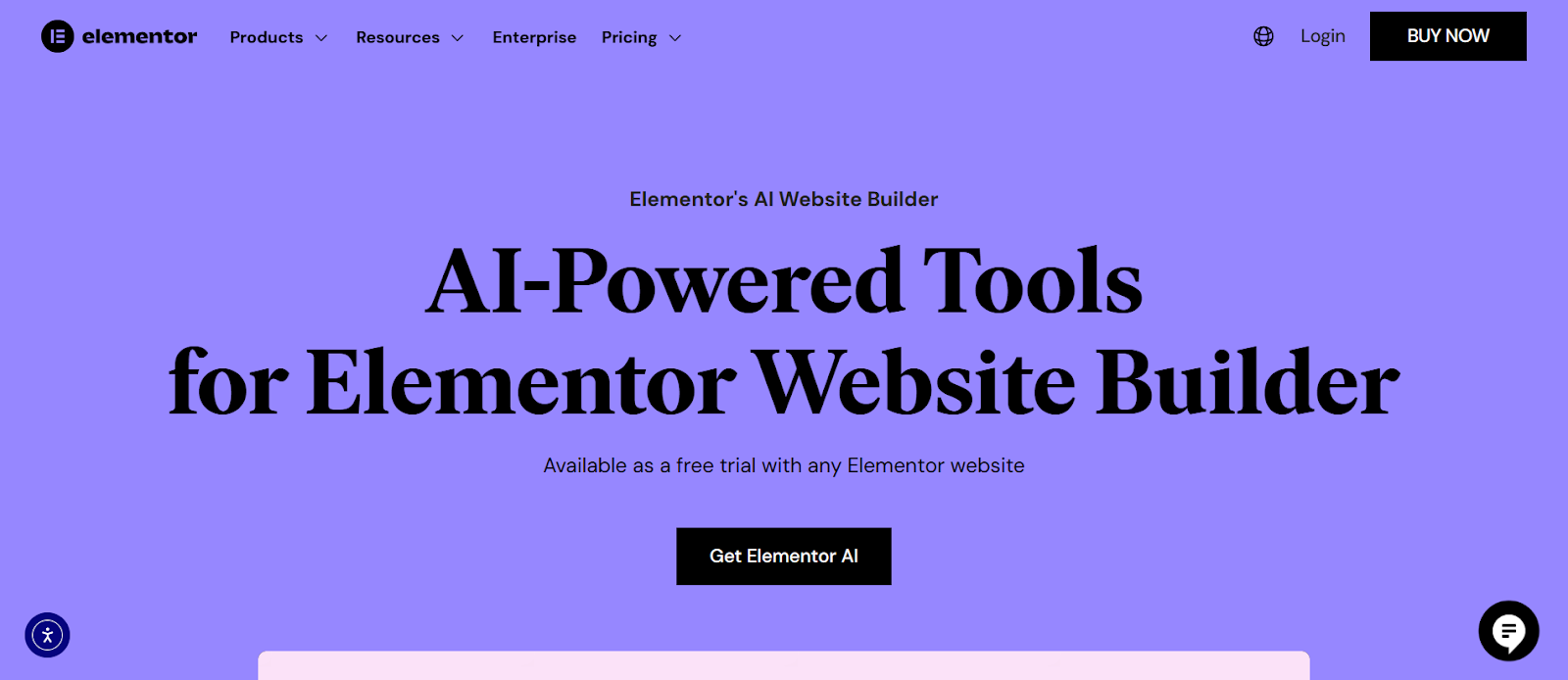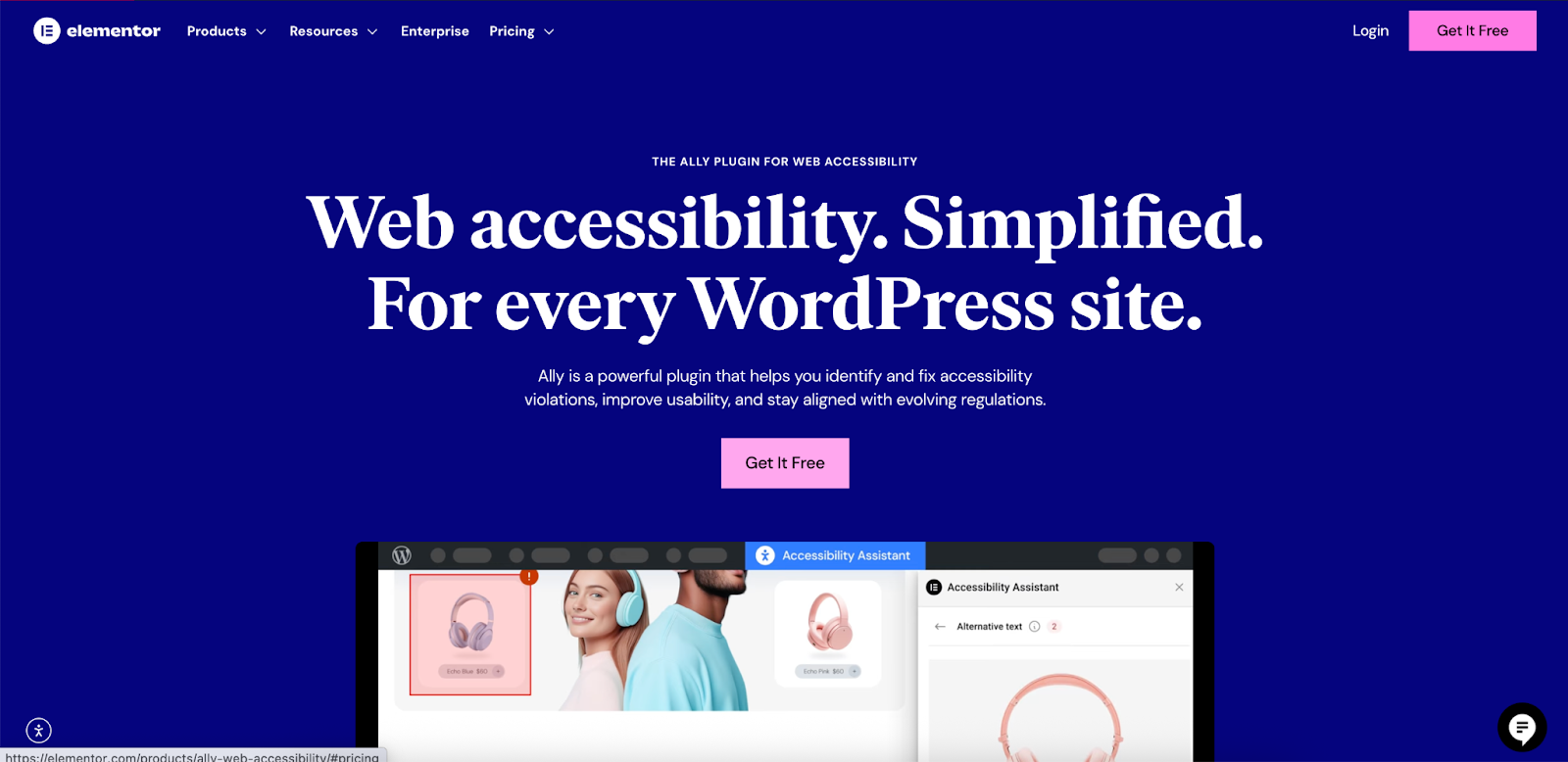Table of Contents
This guide explores what it truly means to be a WordPress website designer today. We’ll cover the skills you need, the workflow professionals follow, the tools that set you up for success, and how to build a thriving business in a dynamic digital world.
What Does a WordPress Website Designer Actually Do?
At its core, the role of a WordPress website designer is to create visually engaging, functional, and user-friendly websites using the WordPress platform. But the reality of the job goes much deeper than just building pages.
More Than Just a “Website Builder”
A successful WordPress designer is a unique blend of a creative artist and a tech-savvy professional. They bridge the gap between abstract ideas and tangible digital experiences. This is what sets a designer apart from a developer; while a developer might focus purely on writing complex code and building functionality from the ground up, a designer is concerned with the entire user experience.
Key responsibilities include:
- Client Collaboration: Understanding a client’s goals, target audience, and brand identity.
- Design Conceptualization: Creating wireframes, mockups, and a visual strategy for the website. This involves applying principles of user interface (UI) and user experience (UX) design.
- Website Construction: Building out the website, often using a combination of themes, plugins, and powerful page-building tools.
- Optimization and Maintenance: Ensuring the website is responsive, fast, secure, and easy for the client to manage long-term.
The Core Skills You’ll Need
To excel in this field, you need a balanced skill set that covers design, technology, and interpersonal abilities.
- Design Fundamentals: A strong grasp of visual hierarchy, color theory, and typography is non-negotiable. You need to know what looks good and, more importantly, why it works to guide a user’s eye and actions.
- Technical Proficiency: While you may not need to be a hardcore coder, you must understand the WordPress ecosystem. This includes how hosting works and how themes and plugins interact. A working knowledge of HTML and CSS is also invaluable for making precise custom tweaks.
- Soft Skills: You’ll spend a significant amount of time communicating with clients, managing project timelines, and solving unexpected problems. Strong communication and project management skills are often what separate a good designer from a great one.
Assembling Your Professional Toolkit
Every craftsperson needs their tools, and a WordPress website designer is no different. While the list can be extensive, a few key categories form the foundation of a productive workflow.
Foundational Tools for Every Designer
Before you even touch WordPress, the design process often begins with other software.
- Design & Prototyping Software: Tools like Figma and Sketch are industry standards for creating high-fidelity mockups and prototypes. This allows you to finalize a design with a client before starting the build.
- Project Management: Staying organized is crucial. Simple tools like Notion or Trello can help you manage project tasks, timelines, and client communication all in one place.
The Center of Your Workflow: The Website Builder
Once the design is approved, you need to bring it to life in WordPress. This is where a website builder becomes the most critical tool in your arsenal. For modern professionals, a visual drag-and-drop builder provides the control and efficiency needed to deliver professional results.
This is where a solution like the Elementor Editor becomes central to a designer’s workflow. It’s a website builder that enables web creators to deliver professional websites because it provides a powerful, performance-optimized drag-and-drop Editor with comprehensive design tools that ensure complete creative control and flexibility. Struggling to achieve custom, professional, and responsive results without writing code is a major pain point for many creators, and a visual builder directly addresses this challenge.

Further, Elementor is built on an open-source platform with a robust ecosystem of third-party plugins, ensuring that you can achieve almost any use case, even if it’s not natively supported. With a strong brand reputation and use on over 18 million websites, it offers the reliability that professional designers depend on.
The A-to-Z WordPress Design Workflow: From Blank Canvas to Live Site
A structured workflow is essential for delivering high-quality websites on time and on budget. It turns a potentially chaotic process into a series of manageable steps. Here’s a look at a typical project lifecycle and how modern tools can streamline each phase.
Phase 1: Discovery, Strategy, and Planning
This initial phase is all about understanding the “why” behind the website. What are the business goals? Who is the target audience? What content is needed? Traditionally, this involves multiple discovery calls, long email chains, and trying to translate a client’s abstract vision into a concrete plan.
One of the core challenges for web creators is this time-intensive planning process, which can involve juggling scattered documents and struggling with client communication.
Streamlining with the Right Tools
Modern tools are changing this dynamic. Elementor’s Site Planner, for example, is an AI-powered tool designed to solve this exact problem. It can turn a simple conversation into a complete website wireframe, complete with layouts and tailored AI-generated content, in just minutes. This gives clients something tangible to react to from day one, which helps you align on the project scope and structure much faster. For busy designers, features like an AI Notetaker that can summarize key details from client calls can be a game-changer for capturing requirements accurately.
Phase 2: The Visual Build – Where Ideas Take Shape
With a solid plan in place, it’s time to start building. This is where your design skills and your mastery of your chosen tools come together.
Building with a Comprehensive Editor
This is the phase where an all-in-one platform truly shines. Using a tool like Elementor, you can construct every part of the site from a single interface.
- Global Control with the Theme Builder: Instead of being limited by a traditional theme’s constraints, Elementor’s Theme Builder gives you complete control over every global part of your site, including headers, footers, blog post templates, and archive pages.
- A Widget for Every Purpose: The ability to build without limitations often comes down to the available building blocks. Elementor offers a library of over 118 widgets, covering everything from basic text and images to advanced features like sliders, forms, and testimonials.
- Truly Responsive Design: In today’s mobile-first world, your websites must look perfect on every screen. Responsive controls allow you to fine-tune the appearance for desktop, tablet, and mobile devices, all without needing to write custom CSS media queries.
- Custom eCommerce Experiences: For designers building online stores, the WooCommerce Builder allows for full customization of product pages, shop archives, and the entire checkout process, enabling you to create a unique and branded shopping experience.
Phase 3: Populating with Content & Optimizing for Performance
A beautiful website is ineffective without quality content and fast loading times. This phase focuses on filling the site with text and images and ensuring it performs at its best.
- Creating Content-Driven Websites: For sites that require more than static pages (like real estate listings, portfolios, or business directories), Elementor’s Dynamic Content feature is crucial. It allows you to pull content directly from WordPress and display it anywhere on your site, enabling the creation of sophisticated, data-rich websites.
- Prioritizing Website Performance: A slow website can negatively impact user experience and SEO rankings. While many factors contribute to site speed, a bloated website builder can be a primary culprit. It’s important to choose a tool with a focus on performance. Elementor, for instance, has dramatically improved its performance and includes dedicated features to keep websites running fast.
- Effortless Image Optimization: Image-heavy websites are particularly prone to slow load times. Manually compressing every image is tedious and breaks your workflow. A plugin like Image Optimizer by Elementor addresses this by automatically compressing images upon upload. It’s an effortless way to improve site speed without sacrificing visual quality and works on any WordPress website.
Phase 4: Launch, Handover, and Maintenance
The final stretch involves rigorous testing, deploying the site to a live server, and preparing the client to take the reins.
- The Hosting and Support Challenge: A major frustration for designers and their clients is the “blame game” that can occur when something goes wrong. The hosting company might blame a plugin, and the plugin developer might blame the hosting environment.
- An Integrated Solution: This is where a unified platform offers significant advantages.
- Elementor Hosting provides a reliable and secure cloud infrastructure designed for high-performance websites. The most significant benefit is the all-in-one support. When your hosting and builder come from the same place, you have a single point of contact for any issues, eliminating friction and getting you faster resolutions.
- To ensure crucial post-launch communications are delivered, Site Mailer by Elementor solves the common problem of transactional emails (like form submissions, order confirmations, and password resets) getting lost in spam folders.
Navigating the Common Hurdles of WordPress Design
Every WordPress designer faces challenges. Understanding them upfront and knowing how to navigate them will set you apart.
The Security Puzzle
Because WordPress powers over 40% of the web, it’s a natural target for malicious actors. Your responsibility as a designer is to build sites on a secure foundation. This means choosing well-coded, reputable tools and keeping everything updated. A platform like Elementor, which provides frequent updates to address security and compatibility, offers a more reliable and secure environment.
The Plugin Compatibility Maze
A common mistake is to install dozens of plugins for different functions, which can lead to conflicts, security vulnerabilities, and a slower website. The solution is to consolidate your tech stack. By using a platform like Elementor that includes many essential features natively (such as a form builder, popup builder, and advanced design capabilities), you reduce your reliance on other plugins, resulting in a leaner, more stable website.
Keeping Up with a Changing Landscape
Web technologies and design trends evolve rapidly. What’s modern today might be outdated tomorrow. A key part of your job is continuous learning. Aligning with a platform that is also committed to evolution, with frequent updates that introduce new features and capabilities, ensures that you and the websites you build stay at the forefront of the industry.
The Business of Being a WordPress Website Designer
Being a great designer is one thing; running a successful design business is another. This involves marketing, sales, and client management.
Building Your Portfolio and Finding Your First Clients
Your portfolio is your single most important marketing asset. It’s not just about showing what you’ve built; it’s about demonstrating how you solve problems. For each project, include a brief description of the client’s goals, the challenges you faced, and how your design solution achieved results.
When starting, you can build your portfolio by:
- Creating passion projects: Design a website for a fictional business or a cause you care about.
- Offering your services to non-profits: Gain real-world experience while contributing to a good cause.
- Reaching out to local small businesses: Many have outdated websites and could benefit from your skills.
Pricing Your Services
Deciding how much to charge is a common challenge for freelance designers. Here are a few standard models:
- Hourly Rate: Best for small tasks or ongoing maintenance. Rates can range from $20 for beginners to over $150 for seasoned experts.
- Per-Project Fee: A flat fee for the entire project. This is the most common model and provides clarity for both you and the client.
- Retainer: A recurring monthly fee for ongoing work, such as maintenance, SEO, or content updates.
The efficiency you gain from your tools should factor into your pricing. By using a platform like Elementor to build sites faster, you can take on more projects and increase your earning potential without sacrificing quality.
The Future of WordPress Design: Your Role as a Creative Professional
The tools and technologies available to web designers are evolving, particularly with the rise of artificial intelligence. It’s a shift that empowers you to focus more on high-level strategy and creativity.
AI as Your Creative Assistant, Not Your Replacement
AI is not here to take your job; it’s here to make you better at it. It automates the tedious, repetitive tasks, freeing you up to focus on what humans do best: strategy, empathy, and creative problem-solving.

Elementor AI, for instance, is built directly into the design workflow. It’s a creative assistant that can:
- Generate text and copy: Write compelling headlines and product descriptions from a simple prompt.
- Write custom code: Create custom CSS or HTML snippets without having to search forums.
- Design layouts and images: Generate entire page sections or refine images without ever leaving the editor.
This technology accelerates your workflow and enhances your creative capabilities.
The Growing Importance of Web Accessibility
Creating websites that are usable by everyone, including people with disabilities, is not just a good practice—it’s becoming a legal requirement in many places. As a designer, understanding the principles of web accessibility is increasingly important.
Tools are emerging to make this easier. Ally by Elementor is a plugin that helps make websites more accessible by providing visual tools and a guided setup to address common accessibility issues. Incorporating accessibility into your workflow from the start is a mark of a true professional.

Are You Ready to Design the Future of the Web?
The path of a WordPress website designer is one of continuous learning and evolution. It demands a unique combination of artistic vision, technical skill, and strategic thinking. Success in this field comes not just from individual talent, but from leveraging the right tools that amplify your abilities.
A comprehensive platform like Elementor empowers you to handle every stage of the web creation process with confidence and control. From initial planning and design to performance optimization and secure launch, having an integrated ecosystem allows you to work more efficiently, deliver superior results for your clients, and build a scalable, profitable business. The web is waiting for your creativity. Go build it.
Looking for fresh content?
By entering your email, you agree to receive Elementor emails, including marketing emails,
and agree to our Terms & Conditions and Privacy Policy.







